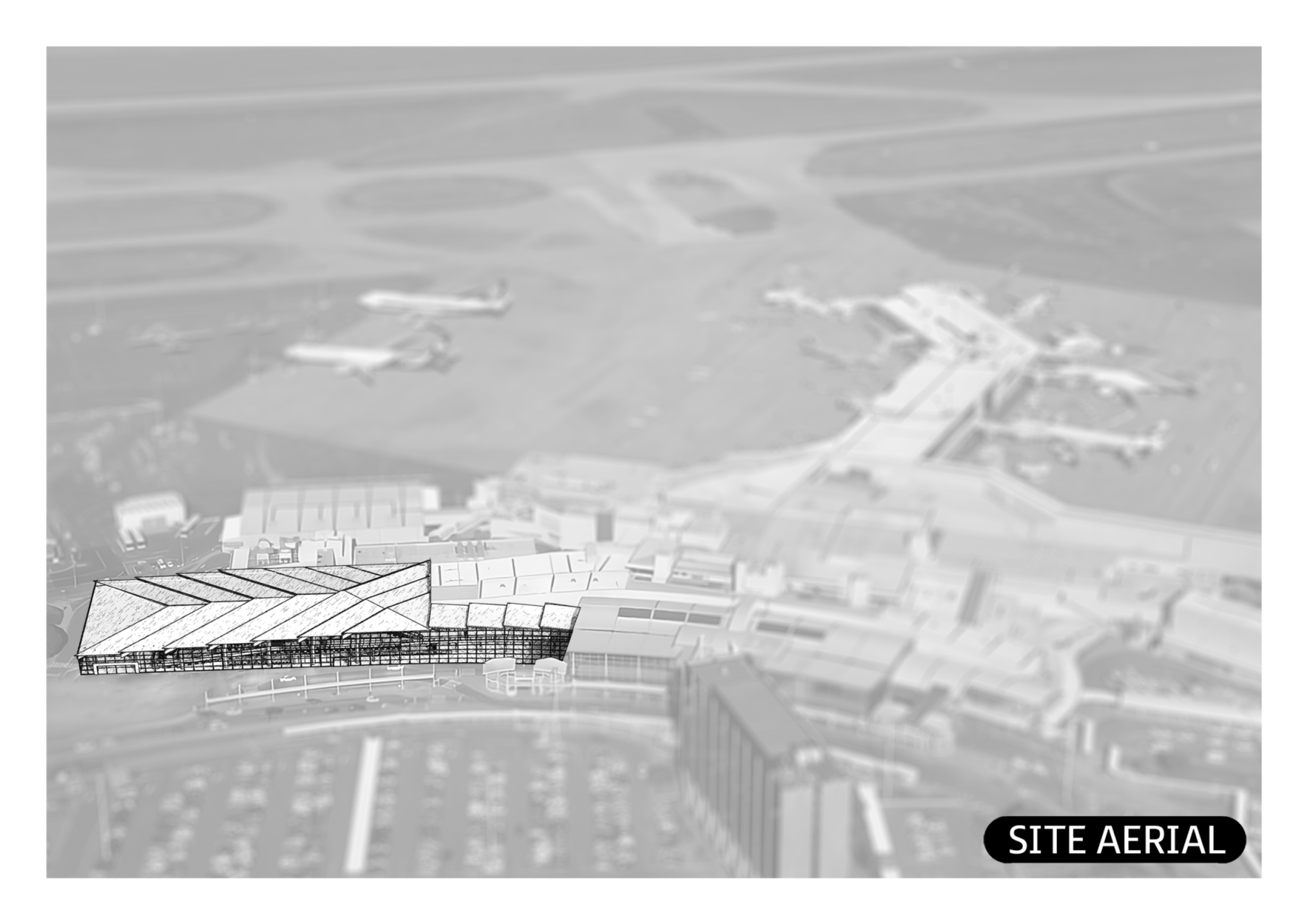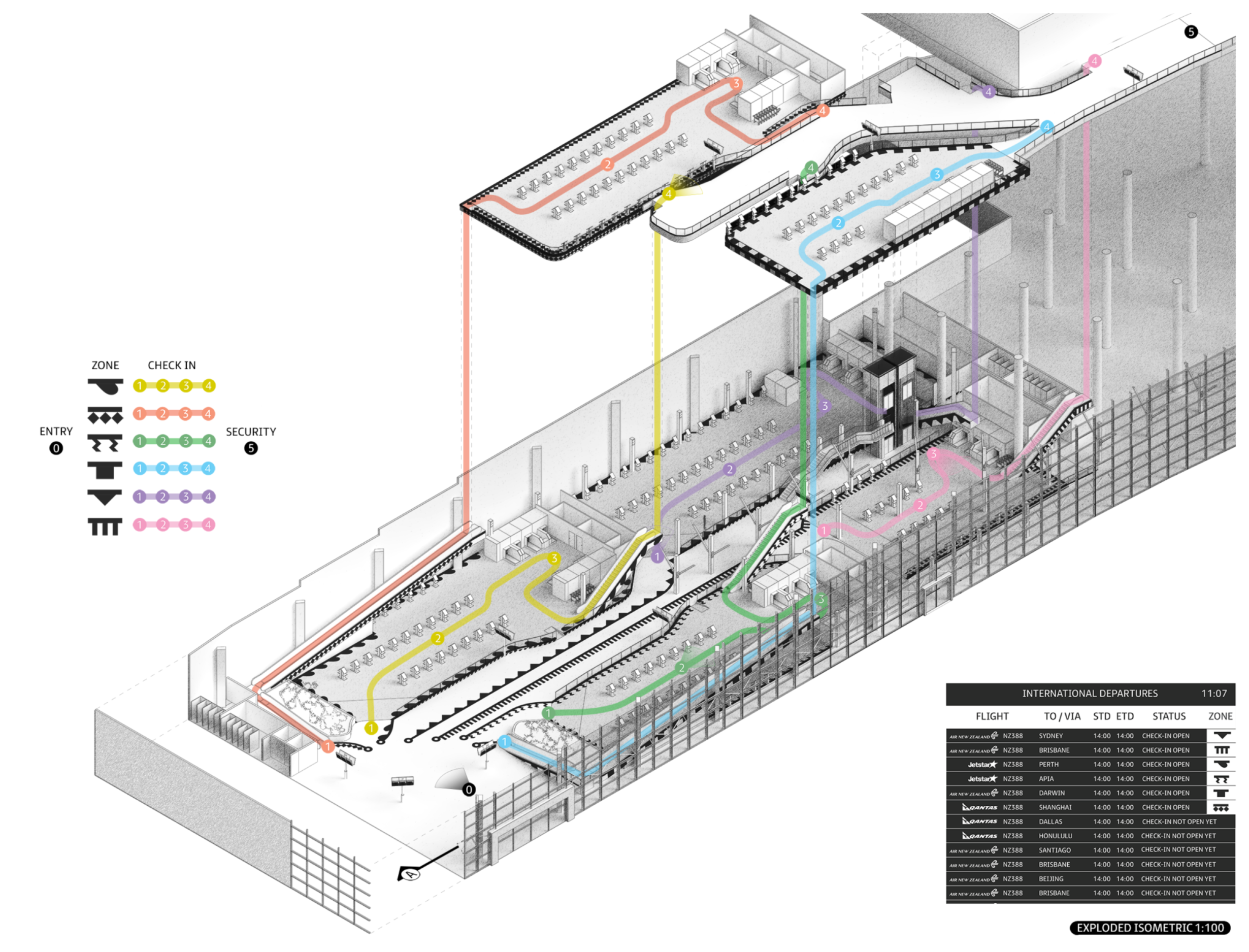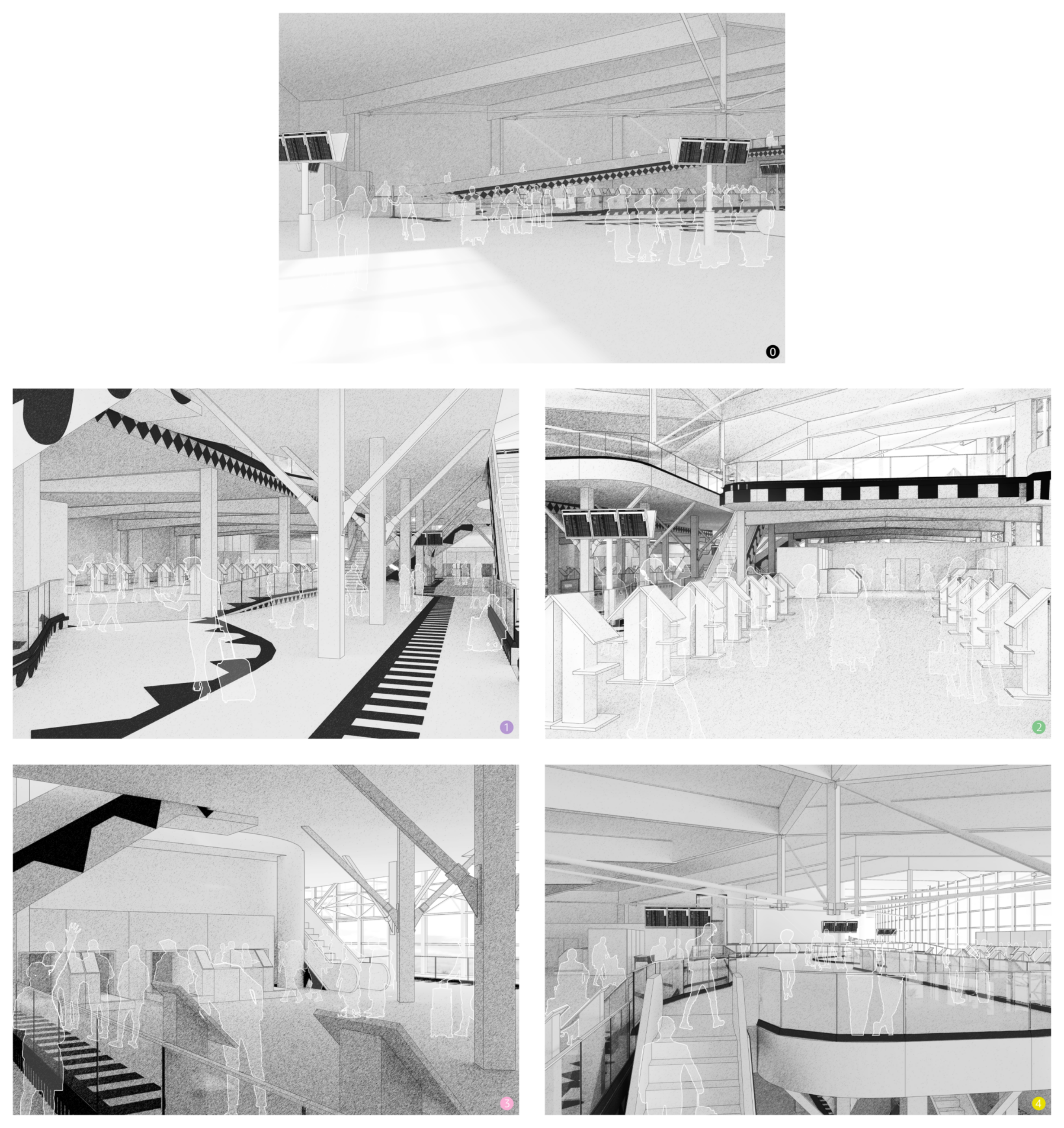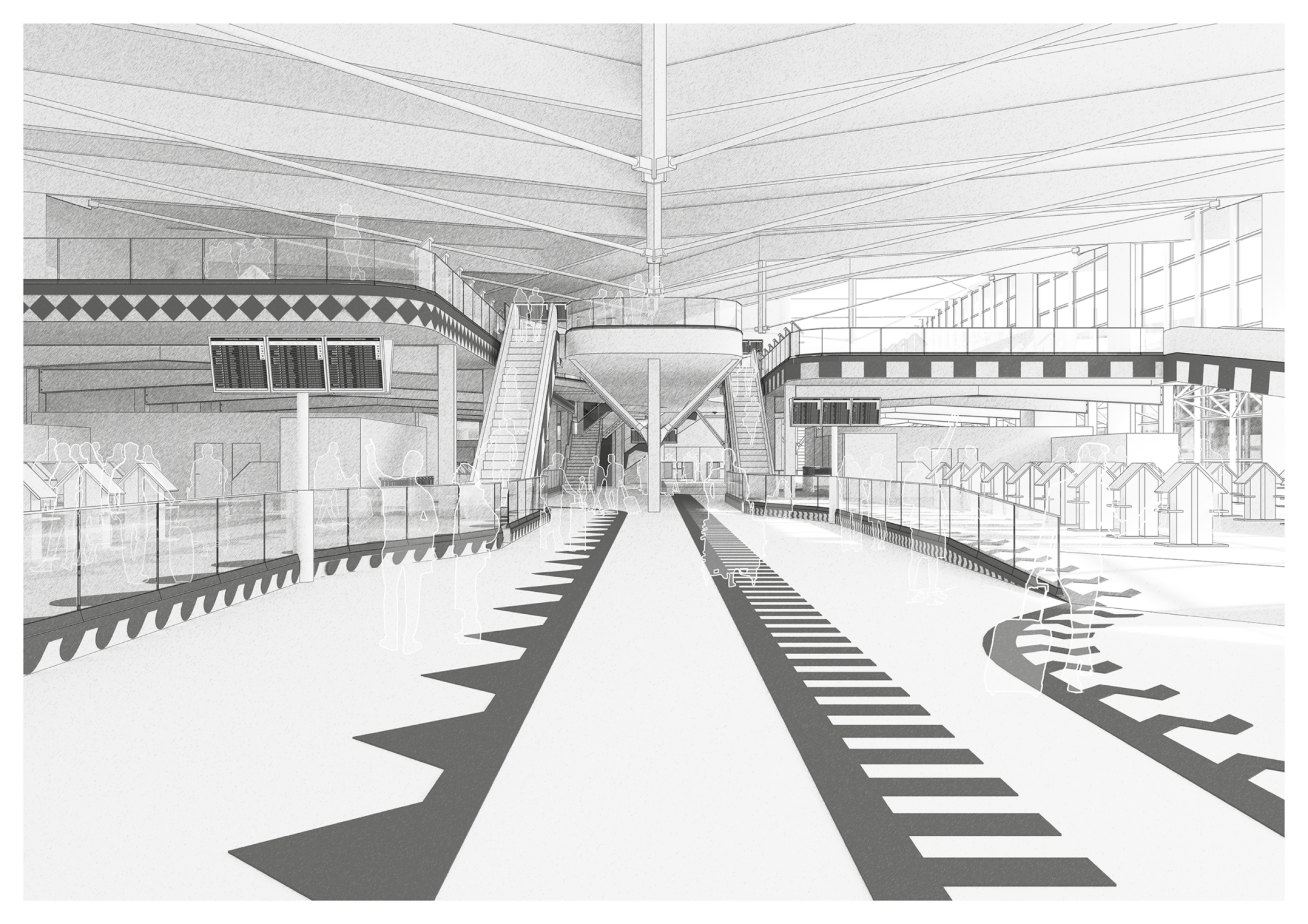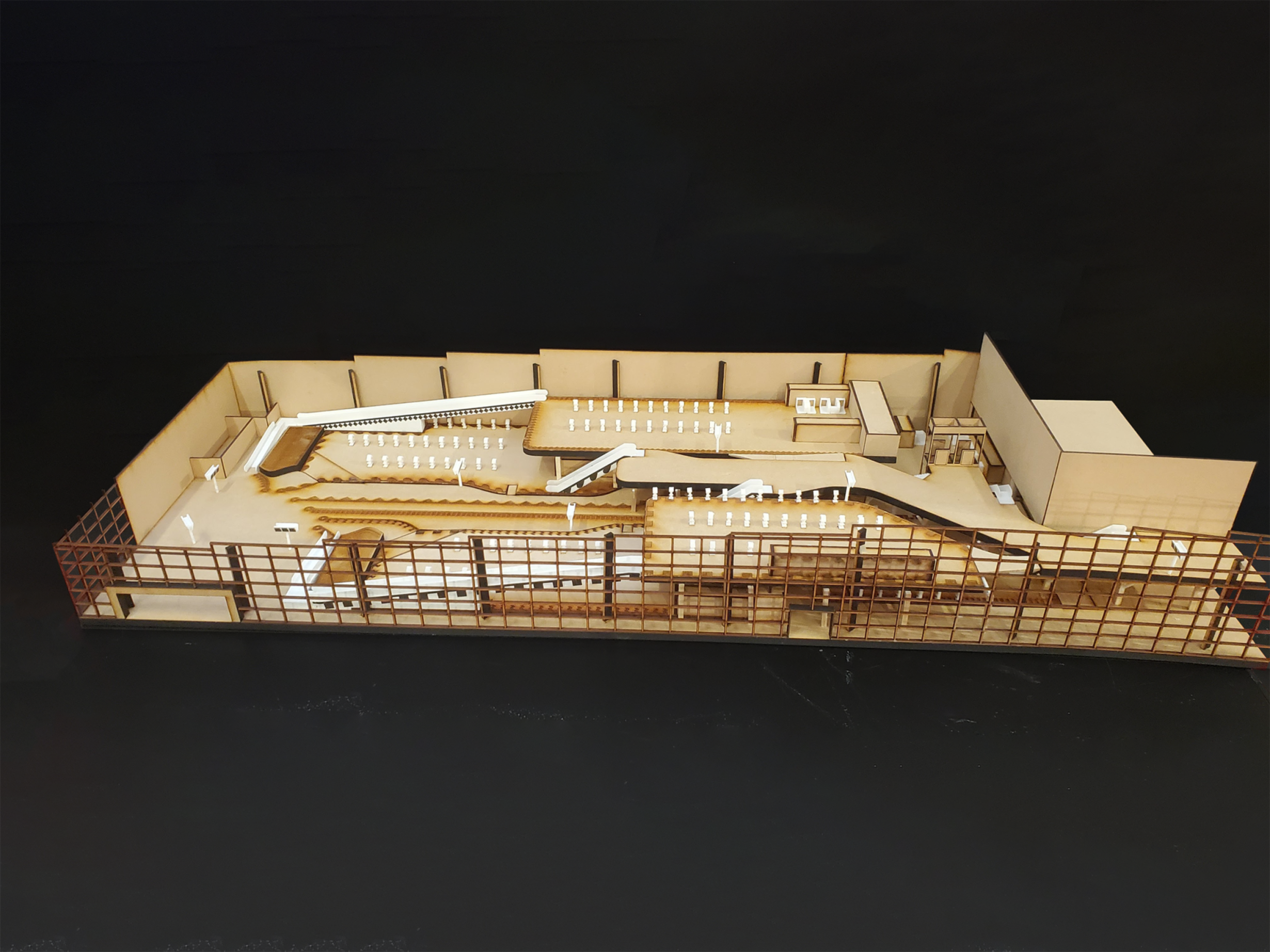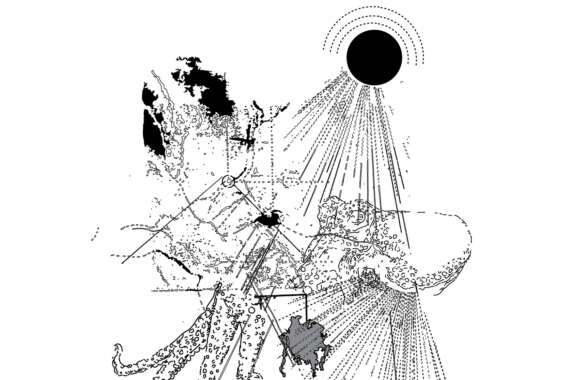Follow Your Gut
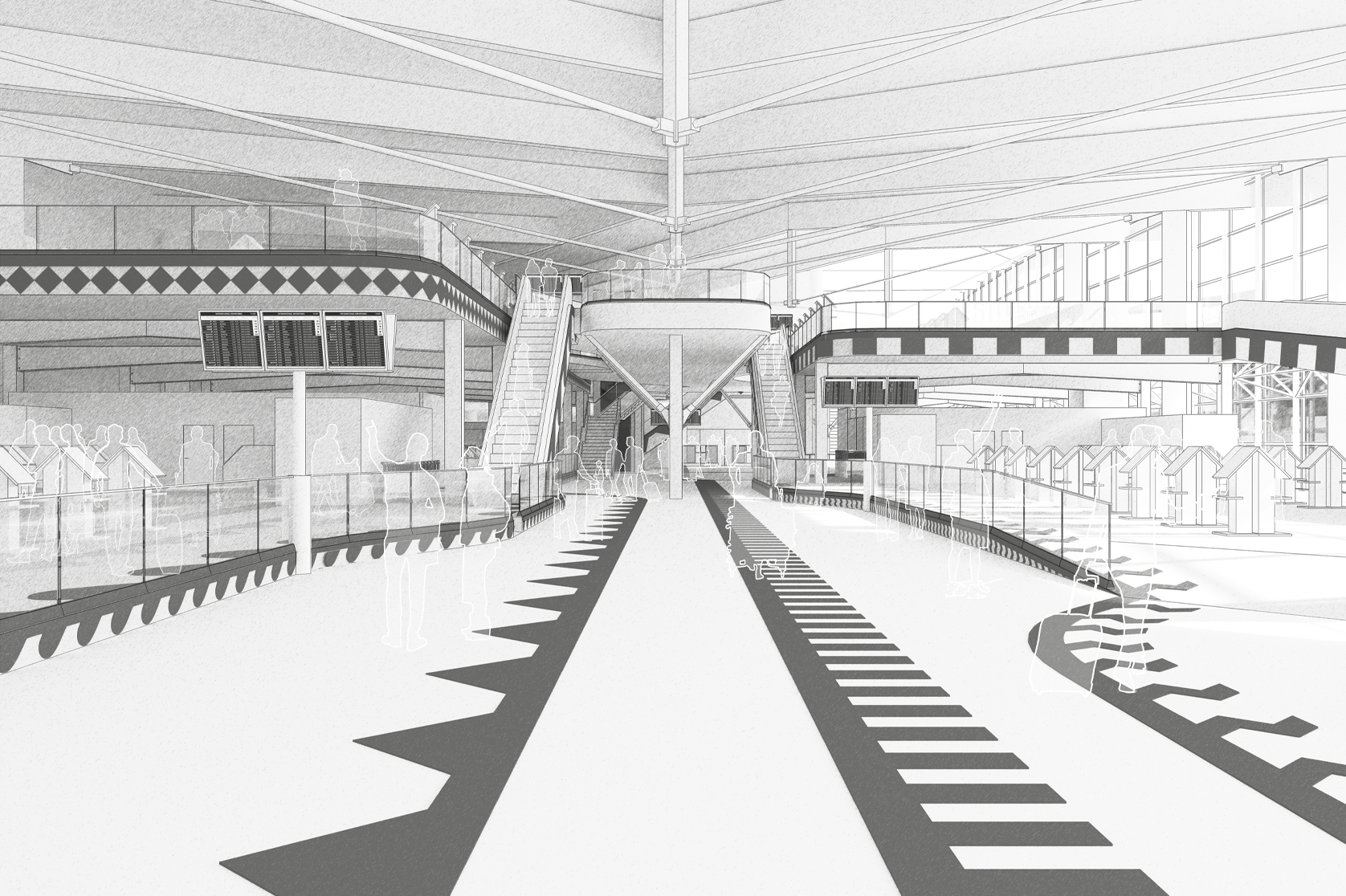
An investigation of the effect architecture has on decision making and wayfinding, in the context of the check in area of Auckland Airport international terminal.
Architecture has the power to shape the way we experience spaces, and our behaviour that stems from
these experiences. We experience features in a space following instinct that was built up since birth, as
well as through millions of years of evolution. By designing architecture that conforms to these instincts,
the space can affect our conscious and subconscious decision making.
Airports, as a functional environment with the goal being moving people from the landside onto the plane,
heavily relies on wayfinding systems to ensure efficient operation. Modern terminals heavily rely on
signage to guide people through spaces. The connection between people and place is replaced by text
and symbols, causing information overload and confusion, resulting in a stressful and inefficient journey.
Through my research, architecture regains its original nature of being able to communicate wayfinding
directly to people, instead of using text as a bridge in communication.
Follow Your Gut investigates the effect of architectural design on passengers' decision-making
and wayfinding behaviours within the check-in area of Auckland Airport International Terminal. The
project aims to facilitate efficient and clear wayfinding for outbound passengers while enhancing their
overall experience. It is scoped as a redesign within the existing footprint, addressing current wayfinding
obstacles to create a more intuitive journey that reduces cognitive load on passengers.









